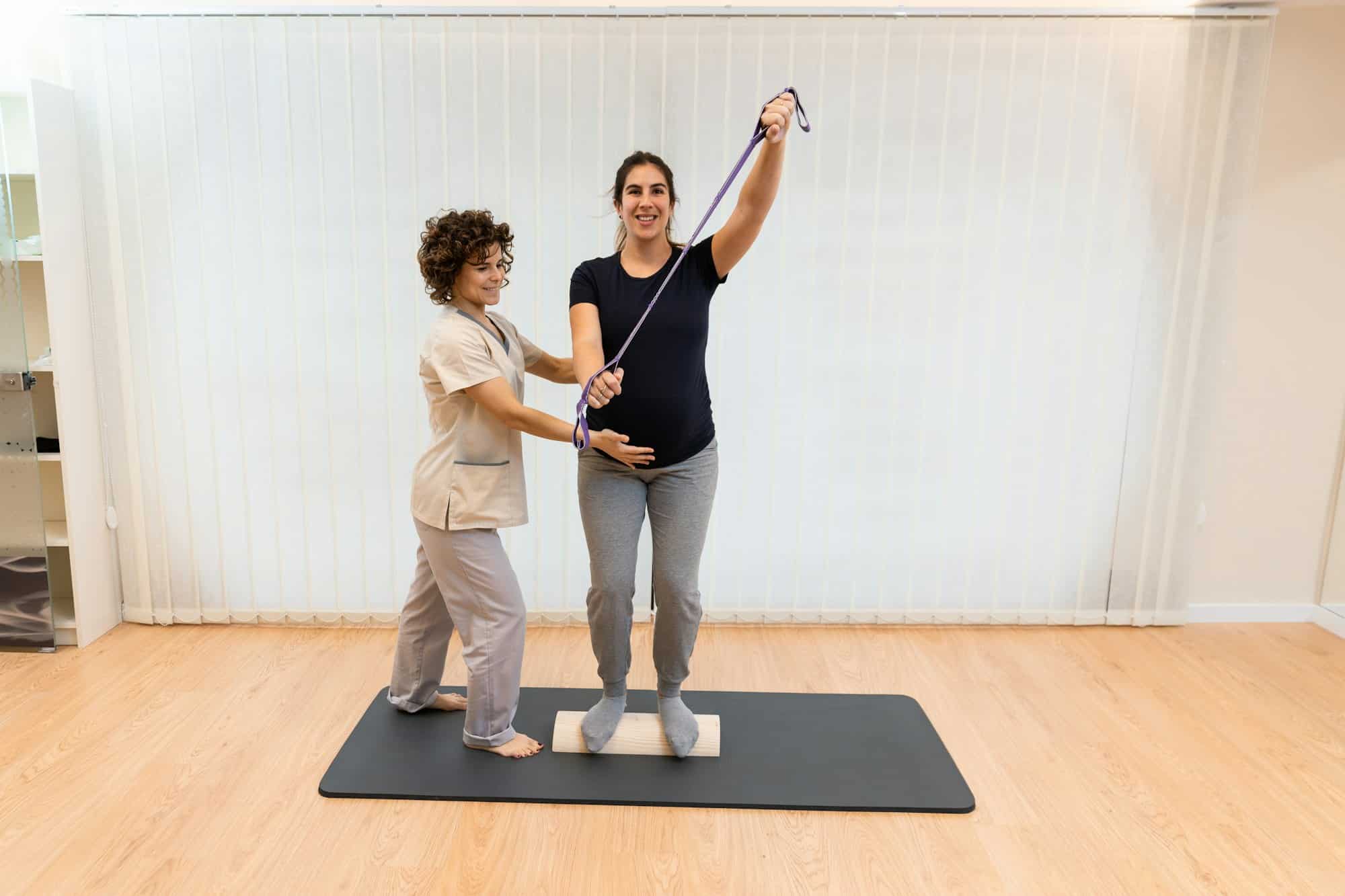What Techniques Can Increase Proprioceptive Skills in Figure Skaters?

Figure skating is a sensory sport that requires skaters to execute complex movements while maintaining balance and control on the ice. The ability to do this effectively heavily relies on a keen sense of proprioception. This term refers to the awareness of the position and movement of the body, which is crucial in any sports performance but is particularly vital in figure skating.
In this article, we will explore different techniques to enhance proprioceptive skills in figure skaters. We will cover areas such as strength and flexibility exercises, ankle control tips, and the role of the vestibular system in balance and performance. Our insights are drawn from various scholarly articles and studies, including those available on PubMed and others indicated by a digital object identifier (doi).
Sujet a lire : What Is the Role of Nutritional Supplementation in Enhancing Muscle Mass in Bodybuilders?
Training that Focuses on Proprioception
Understanding the importance of proprioception in figure skating is the first step towards improving it. Proprioception is often likened to a sixth sense. It involves the ability to know where your body is in space without looking. This sense is crucial for all figure skaters as it significantly improves balance, coordination, speed, and agility on the ice.
A skater’s training regimen should include specific exercises that focus on enhancing proprioceptive capabilities. For example, strength training that includes the use of balance boards, wobble boards, and Bosu balls can be highly beneficial. These tools force the skater to constantly adjust their body to maintain balance, thereby honing their proprioceptive skills.
A découvrir également : How Can Genetic Testing Inform Personalized Training Regimens for Elite Swimmers?
Strength and Flexibility Exercises
Incorporating strength and flexibility exercises into a skater’s training routine can significantly enhance their proprioceptive abilities. These exercises not only build the necessary muscle strength for executing various skating maneuvers but also improve the skater’s awareness of their body in space.
For example, exercises that focus on strengthening the core muscles can help skaters maintain their balance on the ice. Additionally, flexibility exercises such as yoga and pilates can be incorporated into the training regime. These exercises improve balance and proprioception by challenging the skater to control their body through a range of movements.
Ankle Control for Enhanced Proprioception
Ankles play a crucial role in figure skating. They are the primary contact point with the ice and hence significantly influence balance and control. Training that focuses on enhancing ankle control can, therefore, positively impact a skater’s proprioception.
Exercises such as resistance band workouts, calf raises, and ankle rolls are particularly beneficial. They enhance ankle strength and flexibility, ultimately improving proprioception. Furthermore, these exercises can reduce the risk of ankle-related injuries, which are common in figure skating.
The Role of the Vestibular System in Balance and Performance
The vestibular system, located in the inner ear, plays a key role in maintaining balance. It provides sensory information about motion, equilibrium, and spatial orientation. A well-functioning vestibular system is critical for skaters as it helps them maintain stability and orientation during their performance on the ice.
Training that stimulates the vestibular system can thus enhance a skater’s proprioception. This could include exercises that involve head movements or positions that challenge balance. It’s also worth noting that a skater should get checked for any vestibular disorders as these could significantly hinder their balance and performance.
Reducing Injury through Proprioceptive Training
Proprioceptive training not only enhances a skater’s performance but also reduces the risk of injury. By improving body awareness, skaters are better able to control their movements and respond effectively to unexpected changes, such as a slip or a sudden shift in ice quality.
Injury prevention is particularly relevant for figure skaters, who often push their bodies to extreme limits while performing complex maneuvers on the ice. A training regimen that includes proprioceptive exercises can therefore be a game-changer, enabling skaters to perform at their best while safeguarding their health and longevity in the sport.
Through the techniques discussed in this article, figure skaters can significantly enhance their proprioceptive skills, leading to improved performance on the ice. Moreover, these techniques can reduce the risk of injury, ultimately ensuring a longer and healthier skating career.
Cardiovascular Training and Proprioception
In order to develop and enhance proprioceptive skills in figure skaters, cardiovascular training should also be incorporated into their training regimen. This form of training not only improves the overall fitness and endurance of skaters but also aids in enhancing their proprioceptive abilities.
Cardiovascular exercises, such as running and swimming, are crucial for increasing heart rate and promoting blood circulation. This increased blood circulation feeds the muscles and sensory receptors throughout the body, including those involved in proprioception. Over time, regular cardiovascular training can help to enhance the sensitivity and responsiveness of these proprioceptive receptors, leading to improved balance control and overall performance on the ice.
In addition, cardiovascular training also helps to improve the efficiency of the vestibular system. The vestibular system plays an essential role in maintaining balance and spatial orientation, and cardiovascular exercises can help it function more efficiently. For instance, the increased blood flow resulting from cardiovascular training can help to nourish the vestibular system, enhancing its ability to accurately sense changes in position and movement.
Lastly, cardiovascular training can also contribute to injury prevention in figure skaters. By improving cardiovascular fitness, skaters can enhance their endurance and resilience, reducing the risk of fatigue-related injuries. This is particularly vital in figure skating, where skaters often push their bodies to extreme limits while executing complex maneuvers on the ice.
Single Leg Exercises and Postural Stability
Single leg exercises are another effective technique for enhancing proprioceptive skills in figure skaters. These exercises are designed to improve balance and stability, two key aspects of proprioception that are crucial for performance on the ice.
Balance and stability are primarily maintained by the lower body, particularly the legs and ankles. Therefore, exercises that focus on strengthening these areas can significantly enhance a skater’s proprioceptive abilities. Single leg exercises, such as single leg squats, lunges, and hops, can be particularly effective in this regard.
These exercises challenge the skater’s ability to maintain balance and control on one leg, which is a common requirement in figure skating. By regularly performing these exercises, skaters can improve their ability to maintain postural stability, even when executing complex movements on the ice.
Furthermore, single leg exercises also help to enhance ankle proprioception. By placing the entire body’s weight on one foot, these exercises force the ankle to adapt and stabilize, thereby enhancing its proprioceptive capabilities.
In addition, single leg exercises can also contribute to injury prevention. They help to strengthen the lower body muscles and improve joint stability, reducing the risk of injuries that are common in figure skating.
Conclusion
In conclusion, proprioceptive skills are vital for figure skaters who need to execute complex maneuvers while maintaining balance and control on the ice. By incorporating various techniques into their training regimen, such as strength and flexibility exercises, ankle control exercises, vestibular system stimulating activities, cardiovascular training, and single leg exercises, skaters can significantly enhance their proprioceptive abilities. This not only boosts their performance on the ice but also reduces the risk of injury, leading to a healthier and more successful skating career.
Through continuous training, skaters can hone their proprioceptive skills, allowing them to perform even the most complex routines with grace and precision. As the old saying goes, practice makes perfect, and this certainly holds true for improving proprioception in figure skating. With dedication and the right training programs, every figure skater has the capacity to improve their proprioceptive skills and excel in their sport.
